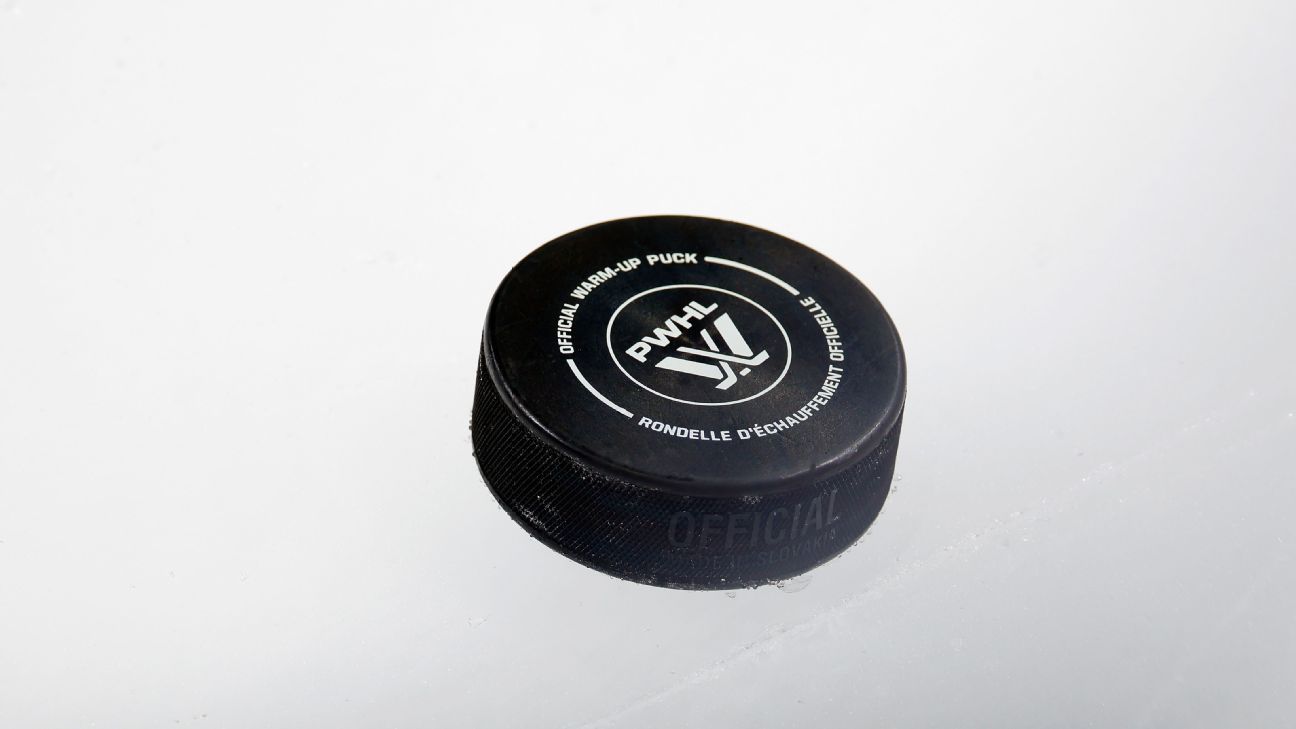The recently launched Professional Women’s Hockey League reached its midseason point on Wednesday by unveiling its playoff format, hinting at the long-awaited arrival of actual team nicknames and logos, while putting aside questions about expansion in Season 2 or beyond for now.
One aspect that won’t be changing anytime soon, PWHL advisory board member Stan Kasten said, is the league reassessing its player salary structure, ranging from $35,000 to $80,000, not including bonuses.
“Reopening the collective bargaining agreement one year into an eight-year deal does not sound likely,” Kasten said in noting that while revenues two months into the league’s first season have exceeded expectations, so have expenditures.
“We still have a long way to go until we are an economic success,” he added.
Joined by PWHL senior VP of hockey operations Jayna Hefford, Kasten spoke during an hourlong video conference call that touched on numerous topics regarding the six-team league that brings together the world’s top players.
“We still have a bumpy road in front of us until we’re a fully formed thing. But we are on track, and we’re certainly ahead of projections,” Kasten said.
The key now is not moving too fast, given the challenges the PWHL still faces in terms of securing proper-sized venues, such as Toronto, which has already outgrown its 2,500-seat home, and lags in attendance in other markets. New York, for example, is averaging a league-low 2,218 fans while splitting its four home games between Bridgeport, Connecticut, and the NHL Islanders’ home, UBS Arena.
Kasten provided the same answer in addressing both issues by saying everything is under review — and that includes marketing, scheduling and ticket prices — while stressing the PWHL is firmly committed to a New York City-area-based team for the long term.
Boston has the league’s second-lowest attendance average at 3,352, while playing out of the University of Massachusetts-Lowell’s Tsongas Center, located about a 45-minute drive outside of Boston.
By comparison, Minnesota, Toronto, Ottawa and Montreal are driving the PWHL’s attendance, which averaged out to 5,109 through 36 of 72 games. The four teams have each enjoyed crowds of at least 8,000, with Toronto drawing 19,285 fans for its game at the Maple Leafs’ home arena on Feb. 16, to set the record for a women’s hockey game.
As for expansion, the PWHL is putting that off for at least next season, while placing a focus on scheduling more neutral-site games to test various markets. This season, the PWHL is already having games played in Pittsburgh and Detroit, both scheduled on March 17.
“Every market we go in, it’s an opportunity for us to understand what that market looks like and to expose our league to a new market,” Hefford said. “Somewhere down the road expansion will be contemplated, but in advance of Season 2, I would say no to those things.”
At least the PWHL has a playoff format finally in place that includes several innovative features.
Four teams will qualify for the playoffs, which will begin in May, with the top team having the choice to determine whether to face the No. 3 or No. 4 seed in a five-game semifinal series. The winners will advance to a five-game championship series.
Hefford also announced how the league will determine which team lands the No. 1 pick in the draft, scheduled for mid-June. The order for the league’s inaugural draft in September was determined by a lottery.
In an effort to remain competitive, the bottom two teams will begin accumulating draft order points from the time they’re eliminated, with the most successful over that stretch getting the top pick. It’s a plan originally proposed more than a decade ago by statistician Adam Gold.
Nicknames and team logos are also on the horizon, though Kasten was unable to say when those might be announced. The PWHL delayed its launch of releasing individual nicknames and logos in part after fans pushed back on some initial renderings and names that became public through patent requests filed by the league last year.
The PWHL is already having an impact on the international women’s hockey schedule.
Hefford announced both USA Hockey and Hockey Canada have agreed to suspend their traditional pre-Olympic residency programs in advance of the 2026 Milan Games to not conflict with the start of the PWHL season.
Both federations previously held six-month camps leading up to the Olympics, which would have led to national team players being ineligible to play in the PWHL until after the Winter Games.
The lack of a residency program has the potential of affecting the next round of contract talks American and Canadian national team players have with their respective federations. Both contracts expire this year.
